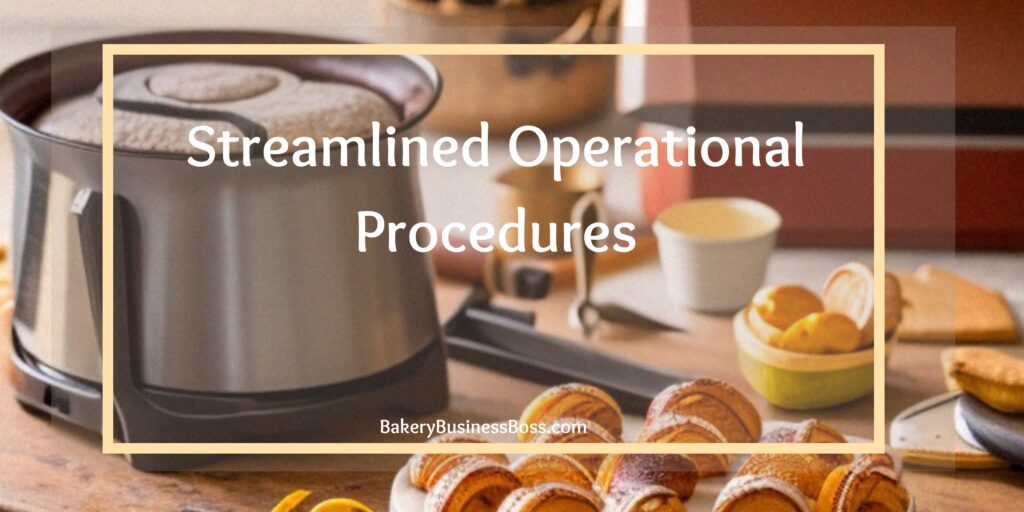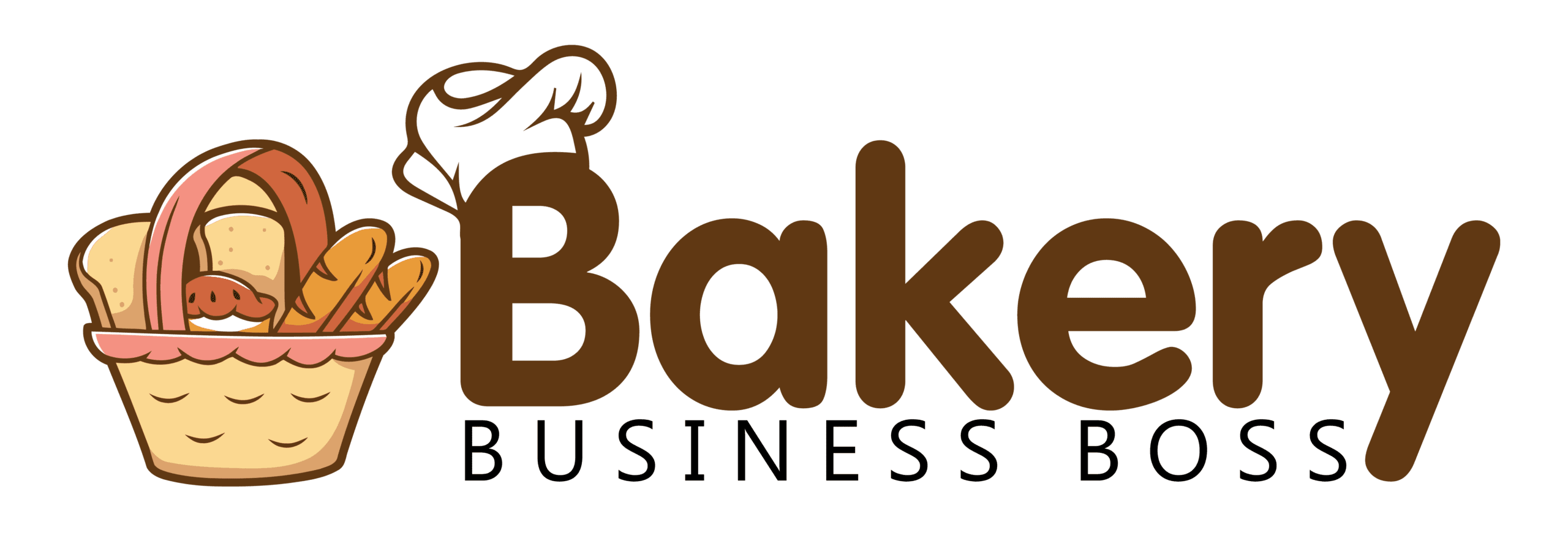Starting a micro bakery is a thrilling endeavor that allows individuals to demonstrate their passion for baking while serving the local community with delectable treats. Ensuring long-term productivity requires meticulous planning and strategic decision-making, as with any business.
To effectively plan a micro bakery business, you should include details about the target market, product options, pricing strategy, marketing strategies, supply chain alliances, operational procedures, and financial sustainability.
In this article, we will examine the essential elements that should be included in a micro bakery’s business plan. By incorporating these details, you can give their micro bakery business a firm foundation.
Identifying the Target Market
Finding the target market is the first and most important phase in a micro bakery business plan. This important step is developing a thorough understanding of the characteristics, tastes, and requirements of your target customers. Understanding your target market will help you develop products and marketing strategies that are tailored to their needs, increasing the likelihood of growth.
It becomes essential to undertake detailed market research to achieve this. You may learn a lot about demographics, economic levels, and customer behavior by investigating the neighborhood. You can learn more about the local market for bakery goods, spot possible underserved areas, and assess the competition by conducting this research.
You can develop a product offering that appeals to your target market’s specific interests and preferences by getting to know them. For instance, you can decide to add organic or gluten-free options to your product range if your research shows a rising trend for healthier baked products. Similar to this, you might think about providing a selection of kid-friendly goodies if your target market is large families.
Your market research enables you to create specialized marketing plans. If you know the media consumption patterns and favorite channels of your potential clients, you may concentrate your marketing efforts where they will most likely be effective. Reaching your target market can entail making use of social media channels, regional advertising, or even teaming up with influencers or nearby companies.
Product Options and Differentiation

It’s critical to specify your product options once you have a firm grasp on your target market to cater to their needs and preferences. Start by deciding which exact bakery products, such as bread, pastries, cakes, or gourmet delights, you wish to sell. To make sure your services meet their demands, consider the tastes, dietary habits, and any market gaps in the area.
Differentiating your products from the competition is crucial if you want to draw in clients. Using distinctive tastes, ingredients, or baking methods that distinguish your micro bakery from the competition is one efficient approach to do this. Try out different combinations to give your products unique qualities that customers won’t find anywhere else. This distinction will capture their interest and persuade them to pick your bakery over rivals.
To add excitement and uniqueness, think about providing seasonal or limited-edition merchandise. A special treat introduced during a holiday, festival, or community event can create buzz and draw in consumers anxious to experience something new. Customers anticipate and look forward to the return of their preferred seasonal delicacies thanks to these limited-time offerings, which also promote repeat business.
Maintaining a balance between diversity and focus is crucial while examining available product possibilities. By providing a wide variety of goods, you may satisfy the varied interests and preferences of your target market. However, ensuring perfection and consistency in each product’s quality is just as crucial. To establish a solid reputation and foster customer loyalty, strive for quality in all aspects of your business.
Pricing Strategy
Planning a pricing strategy is an essential part of starting a micro bakery business because it has a direct impact on profitability and market competitiveness. It’s crucial to evaluate the expenses related to creating your bakery goods to choose a suitable pricing structure. The costs of ingredients, packaging supplies, overhead expenses including rent and utilities, and labor costs should all be taken into account.
Once you have a firm grasp on your expenses, compare your rates to those of your regional rivals to carry out thorough pricing research. This study enables you to assess the market and determine a price range that meets client expectations while ensuring your company’s profitability.
Don’t just focus on cost when determining your prices. Consider your product’s quality, serving sizes, and any distinctive qualities or ingredients that make your goods stand out. The value that your bakery offers to customers, such as superior taste, handcrafted quality, or particular dietary options, should be highlighted.
It’s critical to strike the ideal mix between affordability and profitability. While it could be alluring to lower competitors’ rates, it’s crucial to take the associated costs into account and make sure that your pricing supports long-term business operations. Examine your profit margins to make sure they are sufficient to pay for costs and produce a fair return on investment.
To respond to market changes and client input, your pricing plan needs to be reviewed and adjusted regularly. Keep track of market trends, price changes for ingredients, and the level of competition. To retain a competitive position while meeting their expectations, ask for input from your consumers to better understand how they perceive value.
Effective Marketing Strategies

To effectively market your tiny bakery business and draw clients, marketing is a critical element. Start by concentrating on developing a powerful brand identity that captures the principles of your bakery, highlights its special selling point, and appeals to your target audience. Create a visually appealing logo that embodies the spirit of your bakery, select brand-cohesive colors that arouse the desired feelings, and build a dependable brand voice that represents the character of your bakery.
Utilizing Internet marketing channels is crucial in the current digital world to reach your target audience. Make a professional website that displays your bakery’s products, offers contact and location information, and features an intuitive ordering process. Use social media sites like Instagram and Facebook to interact with customers, offer alluring product images, and run promotions or competitions to get people’s attention. By using search engine optimization (SEO) strategies, you can increase the visibility of your website online and make sure that visitors can find your bakery while looking for the right keywords.
It’s crucial to look into offline marketing avenues in addition to internet ones. Participate in neighborhood meetings and activities to spread the word about your bakery and build relationships with the people in your area. Think about collaborating with other nearby companies to give cross-promotional opportunities like exclusive deals or joint ventures. Additionally, you can increase awareness and encourage potential consumers to stop by your bakery by handing out fliers or coupons to the neighborhood or placing them in regional periodicals.
Long-term productivity depends on developing client loyalty. Implementing a rewards program or providing exclusive discounts for loyal clients can promote client retention and word-of-mouth recommendations. Engage with your audience on social media by swiftly answering their questions and messages and expressing your gratitude for their patronage.
Check out our article to know the best design a bakery shop’s small floor plan should have.
Supply Chain Alliances
Maintaining the quality and consistency of your bakery products depends critically on building solid connections with your suppliers. Start by conducting extensive research to find trustworthy vendors for your primary components and supplies. Find vendors who can regularly satisfy your production demands, adhere to the quality requirements of your bakery, and provide the required certifications or assurances of food safety.
Negotiate advantageous terms and contracts once you have identified suitable suppliers. To preserve profitability without sacrificing quality, look for competitive pricing. To prevent interruptions in your production process, make sure the suppliers can consistently offer the components and resources you need. Additionally, talk about dependable delivery solutions that can satisfy your scheduled needs, allowing you to quickly satisfy consumer expectations.
A seamless supply chain must be regularly evaluated for performance from suppliers. Keep an eye on the quality of the substances or supplies you receive, and deal with any problems or differences as soon as you notice them. Maintain open channels of communication with your suppliers to go over any issues or potential improvements. To make sure your suppliers are meeting your requirements and the high standards required for your bakery items, do routine assessments or performance evaluations.
Streamlined Operational Procedures

An effective micro bakery’s operational methods are its foundation. To do this, it is essential to create a thorough production strategy that takes all relevant factors into account. Start by planning your ingredient sourcing strategy and making sure you have dependable vendors who offer premium ingredients that meet the standards of your bakery. Produce a production schedule that maximizes efficiency while taking demand, shelf life, and preparation times for various items into account.
Operations must be streamlined by putting mechanisms in place to monitor and manage orders. This comprises efficient order management tools or techniques that guarantee prompt fulfillment and reduce waste. Inventory may be effectively managed to lower the possibility of stock shortages or shortages of ingredients, improving cost control and reducing food waste.
To meet regulatory requirements and earn customer trust, it is crucial to establish clear protocols for food safety, sanitation, and hygiene. Create standard operating procedures (SOPs) that describe how to handle, store, and clean food properly. To ensure that these procedures are constantly followed, reduce the danger of contamination, and guarantee the security of your bakery’s products, regularly train and educate your personnel on them.
Maintaining consistent product quality and providing great customer service requires investing in employee training. To ensure consistent product results, train your personnel in baking processes, quantity control, and presentation. Focus on customer service training as well to make sure your staff interacts with consumers helpfully and politely, improving their overall experience.
Ensuring Financial Sustainability
The long-term productivity of your micro bread company depends on ensuring financial viability. To do this, you must develop a thorough financial plan that takes into account all facets of your business operations. Start by determining the launch costs, which could involve investing in things like equipment, leasehold improvements, licenses, permits, and marketing initiatives. Take into account recurring costs such as those for food, packaging supplies, utilities, rent, salaries, and advertising campaigns.
In any financial plan, revenue estimates are essential. Using extensive market research and prior price analysis, estimate the sales volume and average transaction value. This will provide you with a reliable projection of your possible income. Find your break-even point as well, which is the point at which your revenue and expenses are equal. Setting financial objectives above the point of break-even will promote profitability and expansion.
Consider the cash sources needed to open and maintain your bakery as part of your financial plan. Determine prospective sources of capital, such as individual savings, loans, or potential investors. Create a plan for repaying the financing sources or giving them a return on their investment.
Keep an eye on your finances and compare them to your projections regularly. Track important financial indicators like revenue, costs, profit margins, and cash flow. Optimize profitability and ensure sustainability by analyzing any deviations and making the necessary plan adjustments.
To keep track of spending, manage inventories, and improve cash flow, think about putting in place financial controls and procedures. You will be able to do this to discover places where cost savings can be made and to make wise financial decisions.
Check out our article to some ways to effectively design your bakery shop.
Frequently Asked Questions
What factors should I consider when determining the target market for my micro bakery?
Think about factors like age, income, and location when determining your target market. Consider consumer preferences, dietary trends, and any market gaps as well. Conduct in-depth market research to gain knowledge of the neighborhood and rivalries. This will enable you to adjust your items and marketing methods to the requirements and preferences of your target market.
How can I set my small bakery apart from rivals in terms of its product lineup?
Concentrate on distinctive tastes, ingredients, or baking methods that distinguish your items apart from the competition to make your micro bakery apart from competition. To offer a distinctive and genuine experience, think about adding seasonal or local ingredients. To make a product unique and eye-catching, pay attention to presentation, packaging, and branding as well. Specialty or limited-edition products can also thrill customers and draw them in.
What financial factors should I take into account when I design my micro bakery?
Your small bakery’s ability to sustain its business is essential. Establish your initial costs, taking into account the price of supplies, ingredients, licenses, and marketing. Create a pricing plan that strikes a balance between market competitiveness and profitability. Make a thorough financial plan that details projected income, continuing costs, and funding sources.
Keep a close eye on your finances and adapt as necessary to maintain profitability and expansion. To assist you in navigating the financial components of your business strategy, think about speaking with a financial advisor or accountant.
To learn more on how to start your own bakery business check out my startup documents here
Please note that the contents of this blog are for informational and entertainment purposes only and should not be construed as legal advice. Any action taken based on the information provided in this blog is solely at your own risk. Additionally, all images used in this blog are generated under the CC0 license of Creative Commons, which means they are free to use for any purpose without attribution.

About the author. Entrepreneur and Bakery Business Fan.
Hi! I am Shawn and I am a happy individual who happens to be an entrepreneur. I have owned several types of businesses in my life from a coffee shop to an import and export business to an online review business plus a few more and now I create online bakery business resources for those interested in starting new ventures. It’s demanding work but I love it. I do it for those passionate about their business and their goals. That’s why when I meet a bakery business owner, I see myself. I know how hard the struggle is to retain customers, find good employees and keep the business growing all while trying to stay competitive.
That’s why I created Bakery Business Boss: I want to help bakery business owners like you build a thriving business that brings you endless joy and supports your ideal lifestyle.

